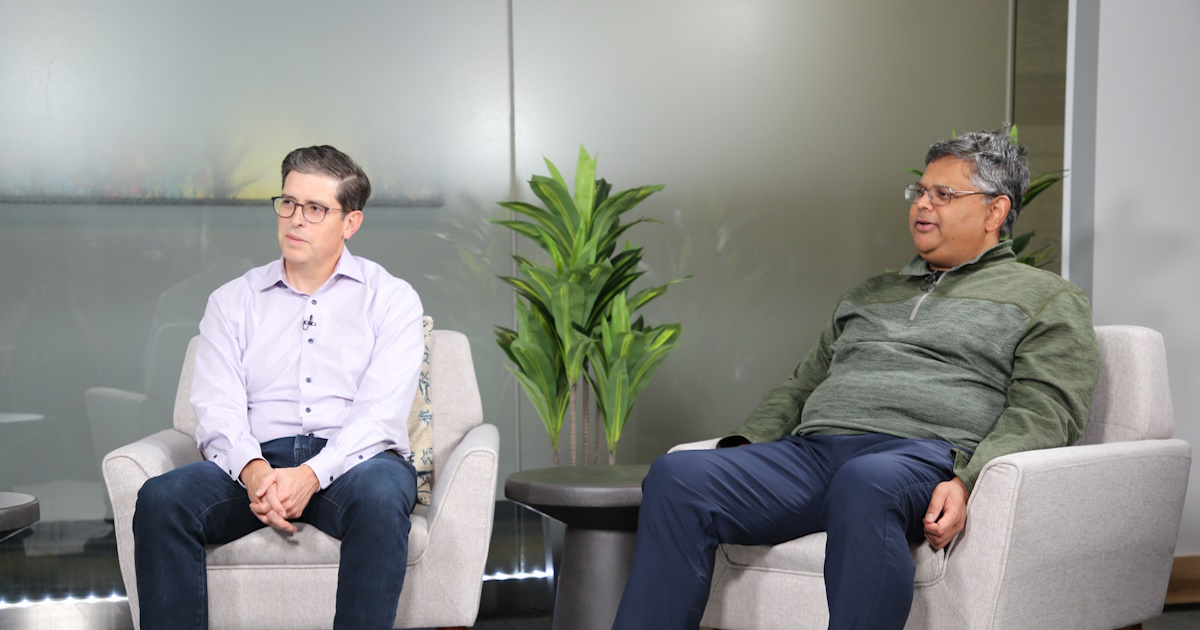 AI
AI
 AI
AI
 AI
AI
Disaggregated infrastructure is becoming the backbone of modern data centers as enterprises race to meet the escalating demands of generative AI.
With AI driving a surge in compute and storage requirements, organizations are overhauling legacy systems in favor of flexible, scalable architectures that can support power-hungry workloads and rapid innovation. The shift isn’t just about upgrading hardware — it’s about rethinking the entire data center ecosystem to unlock performance, reduce inefficiencies and gain greater control over enterprise data, according to Travis Vigil (pictured, left), senior vice president, product management, at Dell Technologies Inc.

Dell’s Travis Vigil talks to theCUBE about disaggregated infrastructure.
“What we’ve learned over the course of the last 10 years is that while hyperconverged was really great if people were focused on a singular ecosystem … you need to move to a disaggregated architecture,” Vigil said.
Vigil and Arunkumar Narayanan (right), senior vice president, server and networking products, at Dell Technologies, spoke with theCUBE’s Dave Vellante at the “Is Your IT Infrastructure Ready for the Age of AI?” event, during an exclusive broadcast on theCUBE, SiliconANGLE Media’s livestreaming studio. They discussed how enterprises are adopting disaggregated infrastructure to modernize data centers and meet the rising demands of generative AI. (* Disclosure below.)
For enterprises facing mounting pressure to integrate AI capabilities, the traditional approach of bolting together servers, storage and networking no longer cuts it. Companies are now re-architecting their environments to decouple these components to optimize each independently. The need to support multiple hypervisors, gain operational efficiency and reduce total cost of ownership is driving this architectural shift, Vigil explained.
“If you want to be ready for generative AI, if you want to set yourself up to have multiple hypervisors in your environment, if you just want to get better TCO in your data center, moving to an architecture that looks a lot like what three-tier was, but is different in a couple [of] key ways, is the right investment to make,” Vigil said.
This new model is gaining momentum not just because of its scalability, but because of its ability to maximize infrastructure utilization. Hyperconverged infrastructure, while once optimal for simplicity, often resulted in underutilized cores and inflexible environments. Disaggregated setups, in contrast, enable enterprises to fully leverage both compute and storage assets — reducing excess capacity and enabling advanced AI workloads, according to Vigil.
“What we’re seeing with the need to have choice and flexibility around which hypervisor you choose … has led us to a new conclusion, which is in order to get the most out of your infrastructure … you can’t have a solution where your cores on your HCI are 20, 30% utilized,” he noted. “That’s what we’ve seen in practice.”
Enterprises are prioritizing on-prem data center modernization to meet the demands of AI, sidestepping expensive cloud migrations. Aging infrastructure limits available power and space for AI workloads, pushing organizations to rethink their environments. Upgrades are essential to accommodate high-density compute and leverage existing data without relocating critical assets, according to Narayanan.
“Every enterprise, if they need to start doing AI, they need to create space for AI,” he said. “They need to create power for AI. Data centers are like 10 years old, 15 years old, nobody has modernized that.”
The shift also carries significant implications for energy efficiency. As organizations deploy increasingly dense AI workloads, aging data centers face major constraints in power and cooling. By consolidating hardware through newer, more efficient servers — and pairing that with liquid cooling technologies — enterprises can reclaim space, reduce their power footprint and better support next-gen compute demands, Narayanan said.
“You can do a seven-to-one consolidation ratio,” he explained. “Think of if you have a hundred servers, you can take out a hundred of those servers, replace it with 14 servers or 15 servers. That is what new data center modernization is all about.”
The integration of intelligent storage and data protection is another critical pillar of this transformation. As AI models require vast quantities of high-quality data, enterprises must reimagine how they manage unstructured data, backups and cyber resilience. Solutions that bring together file and object storage with anomaly detection and flash-speed recovery are becoming must-haves in the AI infrastructure toolbox, according to Vigil.
“We’ve built in an integration between our PowerStore product and our PowerProtect data domain products such that you can do backups at four times the rate versus alternative methods,” he said. “Something I’m really excited about is that we’ve built anomaly detection into PowerProtect data manager.”
Here’s the complete video interview, part of SiliconANGLE’s and theCUBE’s coverage of the “Is Your IT Infrastructure Ready for the Age of AI?” event:
(* Disclosure: TheCUBE is a paid media partner for the “Is Your IT Infrastructure Ready for the Age of AI?” event. Neither Dell Technologies Inc., the sponsor of theCUBE’s event coverage, nor other sponsors have editorial control over content on theCUBE or SiliconANGLE.)
Support our mission to keep content open and free by engaging with theCUBE community. Join theCUBE’s Alumni Trust Network, where technology leaders connect, share intelligence and create opportunities.
Founded by tech visionaries John Furrier and Dave Vellante, SiliconANGLE Media has built a dynamic ecosystem of industry-leading digital media brands that reach 15+ million elite tech professionals. Our new proprietary theCUBE AI Video Cloud is breaking ground in audience interaction, leveraging theCUBEai.com neural network to help technology companies make data-driven decisions and stay at the forefront of industry conversations.